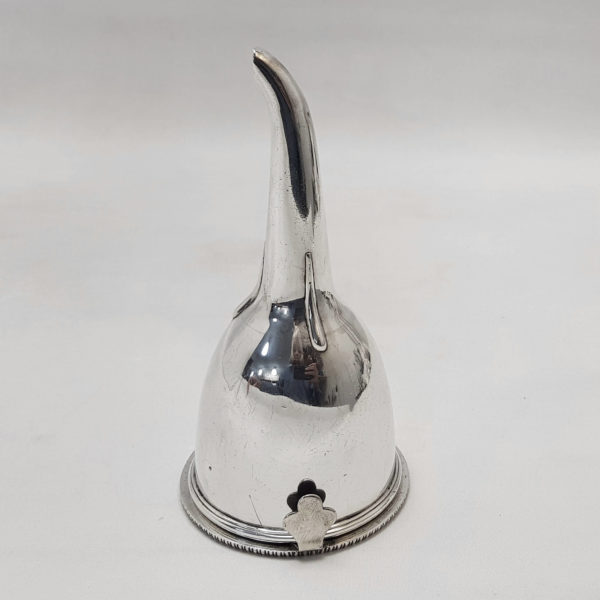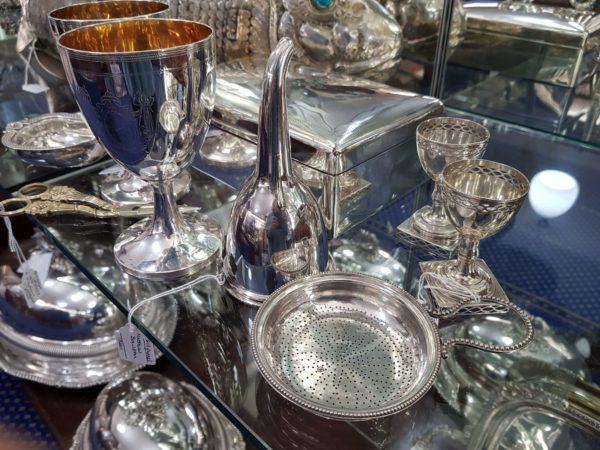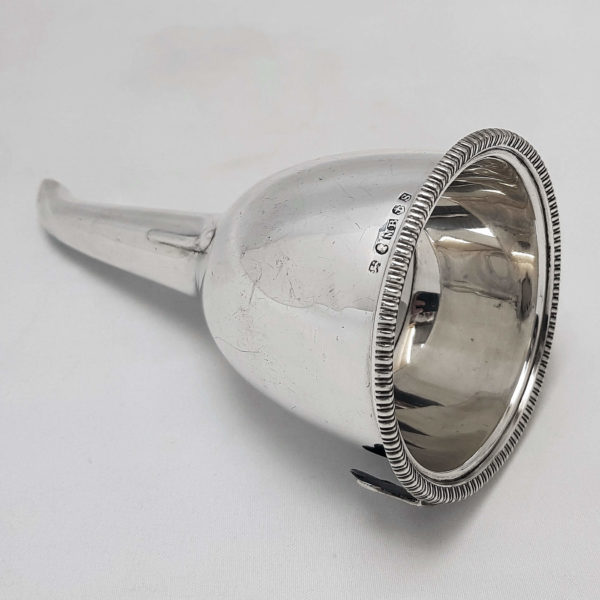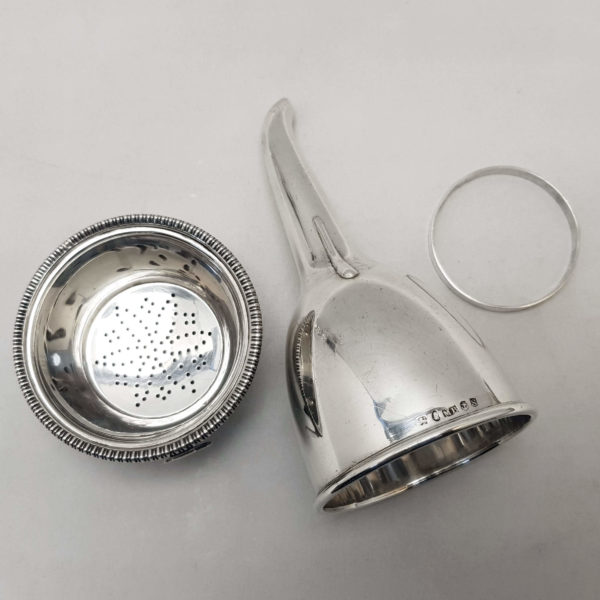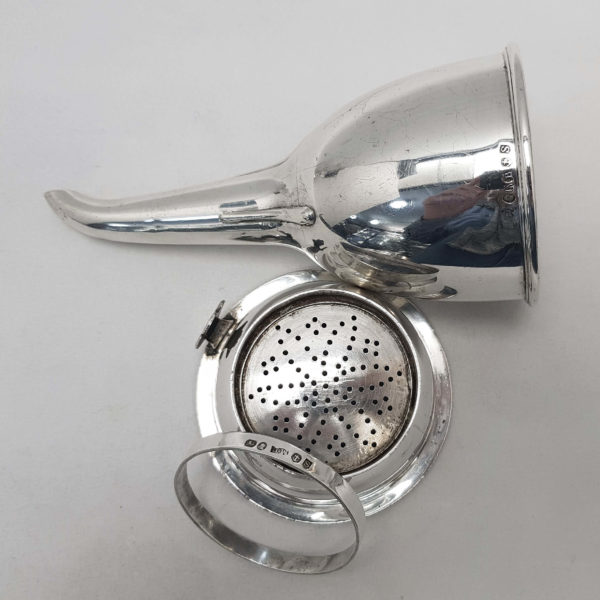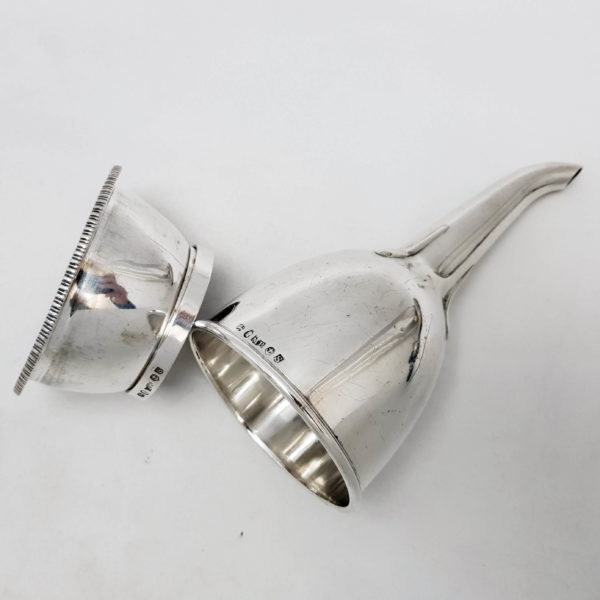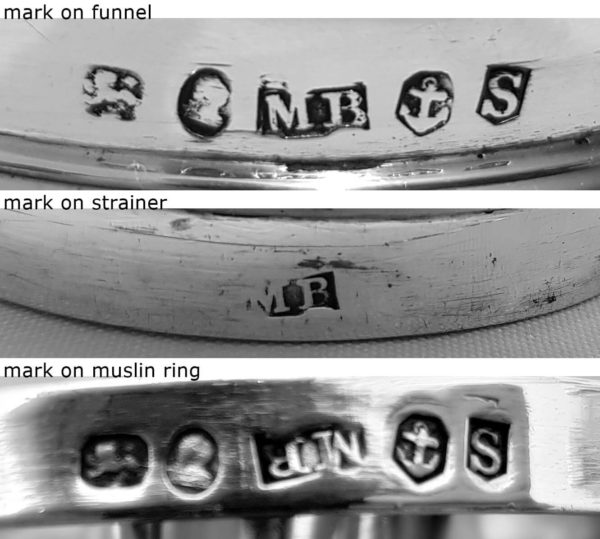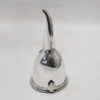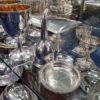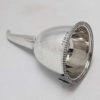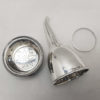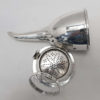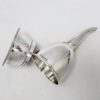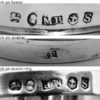George III Antique Silver Wine Funnel
SOLD
Stock: 10261
Date: 1790
Maker: Matthew Boulton
Country: England
A classic style antique silver wine strainer with a gadroon border and simple shaped thumb piece. Very elegant form. Good...
Description
Description
A classic style antique silver wine strainer with a gadroon border and simple shaped thumb piece. Very elegant form. Good weight and colour. A rare feature is the detachable muslin strainer ring.
Weight 186 grams, 5.9 troy ounces.
Length 15 cm. Diameter 7.7 cm.
Birmingham 1790.
Maker Matthew Boulton.
Sterling silver.
18th century.
Marks. Stamped with a full set of marks on the funnel and muslin ring, the strainer with maker’s mark only. All matching.
Literature – The wine funnel became common towards the end of the 18th century; a few rare earlier examples exist. With the modern wine making methods wine funnels are generally used just for decanting wine however in olden times the wine needed to be filtered before drinking it. The pierced platform is not normally sufficient to strain the wine properly and needs a piece of muslin fitted between the pierced section and the spout. There are two main varieties: the first has a spout which detaches just below the bowl of the funnel, the other has a detachable inner bowl with a pierced centre inside the main bowl. Occasionally there is a further detachable ring which held the muslin firmly. Funnels exist without a pierced strainer and were probably used to decant liquor or possibly perfume; these are normally smaller in size.
Condition
This excellent silver wine funnel is in good condition with moderate signs of wear commensurate with age. There are a few minor dinks and possible trim to the funnel tip.
Maker Information
Maker: Matthew Boulton
Matthew Boulton (3 September 1728-17 August 1809), English silver manufacturer and business partner of Scottish engineer James Wyatt. In the final quarter of the 18th century, the partnership installed hundreds of Boulton and Watts steam engines, making possible the mechanisation of factories and mills. Boulton applied modern techniques to the minting of coins, striking millions of pieces for Britain and other countries, and supplying the Royal Mint with up to date equipment. Boulton was a keen member of the Lunar Society, a Birmingham group prominent in the arts, sciences, and theology. Members included Watt, Erasmus Darwin, Josiah Wedgwood and Joseph Priestley. The Society met each month near the full moon, its members credited for developing concepts and techniques in science, agriculture, manufacturing, mining and transport that laid the groundwork for the industrial revolution. Boulton's father was a "toy maker" and silver stamper specialising in the production of shoe-buckles. Boulton junior was taken into partnership in 1749 and left in sole charge of the busines of the business after the death of his father in 1759. Among the products which Boulton wished to make was sterling silver plate for those able to afford it and Sheffield plate for those less well off. In 1762 Boulton took John Fothergill as partner to act as travelling salesman advertising his wares and his factory moved to Soho, Birmingham in the same year. The partnership concentrated in the production of steel "toys" a little later on buttons and buckles made in a variety of substances including silver. In 1762 the Soho factory began to produce articles in "Sheffield" plate and was one of the first to adopt "Sterling silver thread" edging which prevent to reveal the underlying copper. Boulton soon became the largest manufacturer of "Sheffield plate" in the country and expanded the business of his Soho manufactory to encompass the production of bijouterie, objects d'art and de virtue, in ormolu, pinchbeck and tortoise-shell, and in clocks. In 1765 Boulton began to manufacture items in solid silver and was obliged to send every piece of plate to Chester to be marked (Chester was the nearest assay office, 72 miles from Birmingham). Boulton started a petition to assay silver in Birmingham and was successful in getting Parliament to pass an act establishing assay offices in Birmingham in 1773 and also in that same year in Sheffield, whose silversmiths had faced similar difficulties in transporting their wares. Boulton's distinctive Old Sheffield plate mark with two suns is a sign of quality and his work is much sought after. His sterling silver mark, a simple “MB”, was accompanied by John Fothergill’s “IF” during their partnership (1762-1783).
Our Guarantee
Customer satisfaction is our primary concern
All silverware on our website is checked thoroughly prior to offering it for sale and every product listing contains a condition report and details of the silver hallmarks.
All items offered on our website include:
- Free Shipping Worldwide
- Tracked and Insured
- 14 day no quibble money back guarantee
- We are accredited members of LAPADA and conform to their strict professional standards
- We dispatch 1-3 days after receiving cleared payments
More detailed information about deliveries, returns and how to pay is available in the Help section at the bottom of this page.
